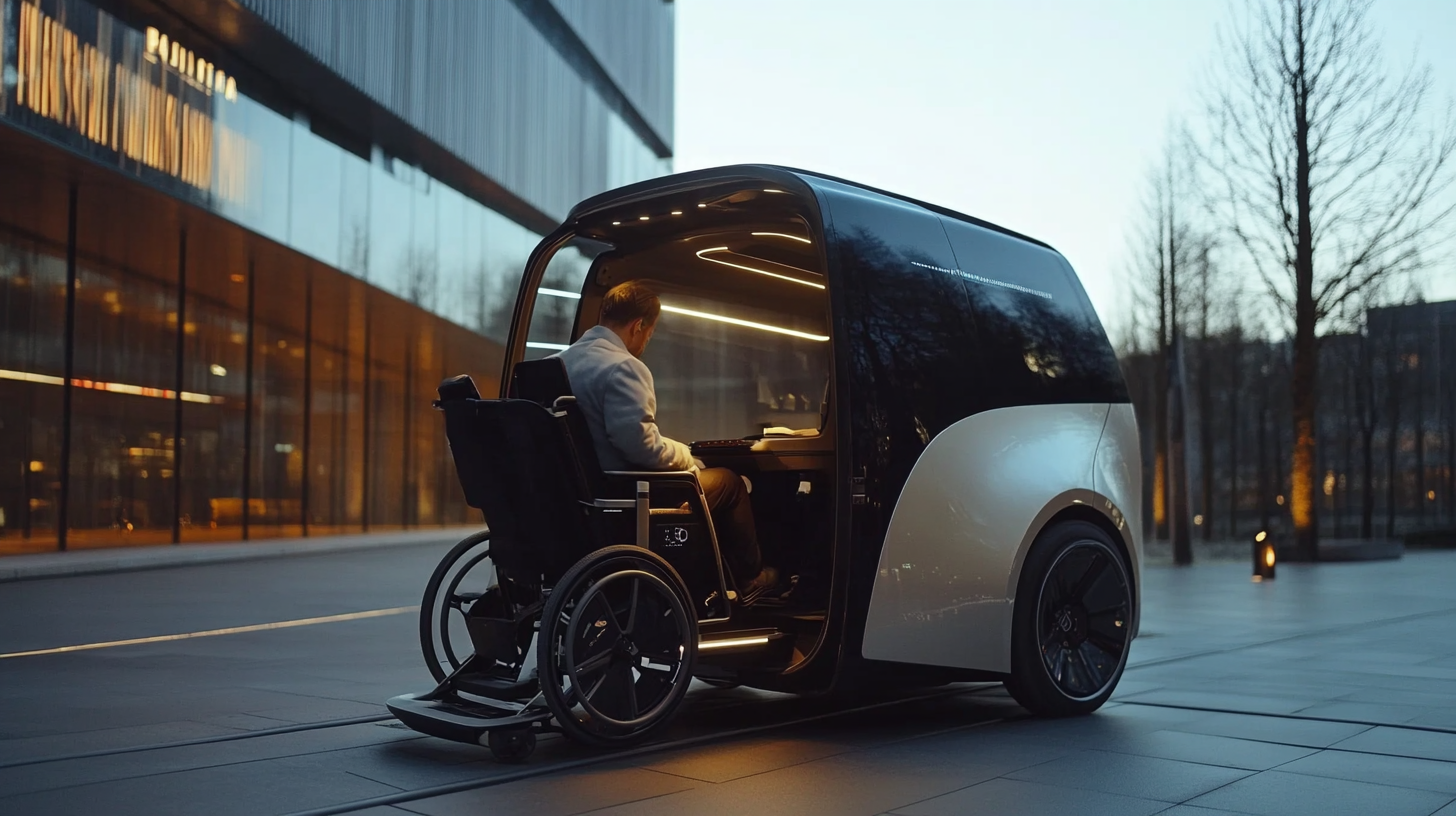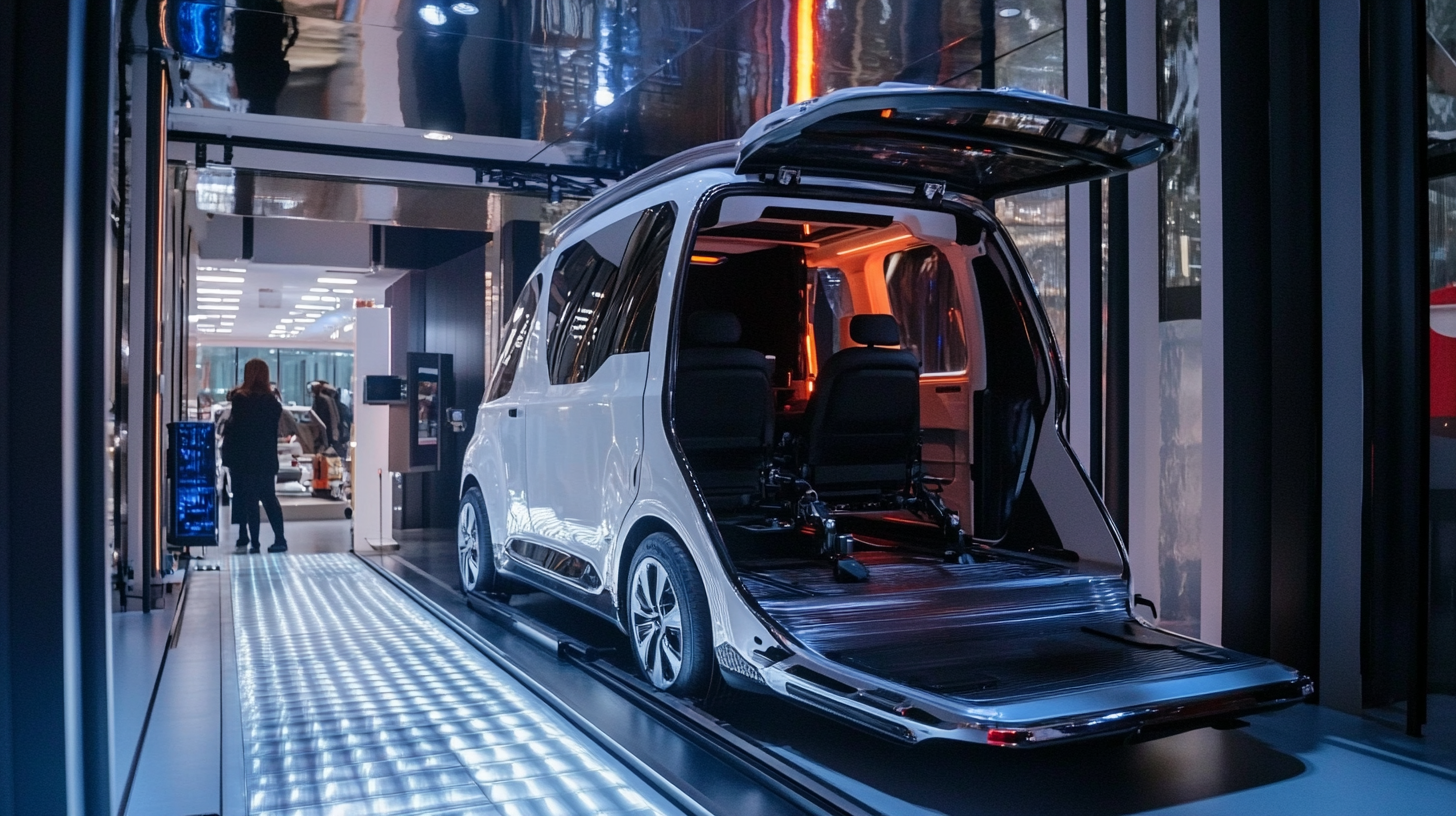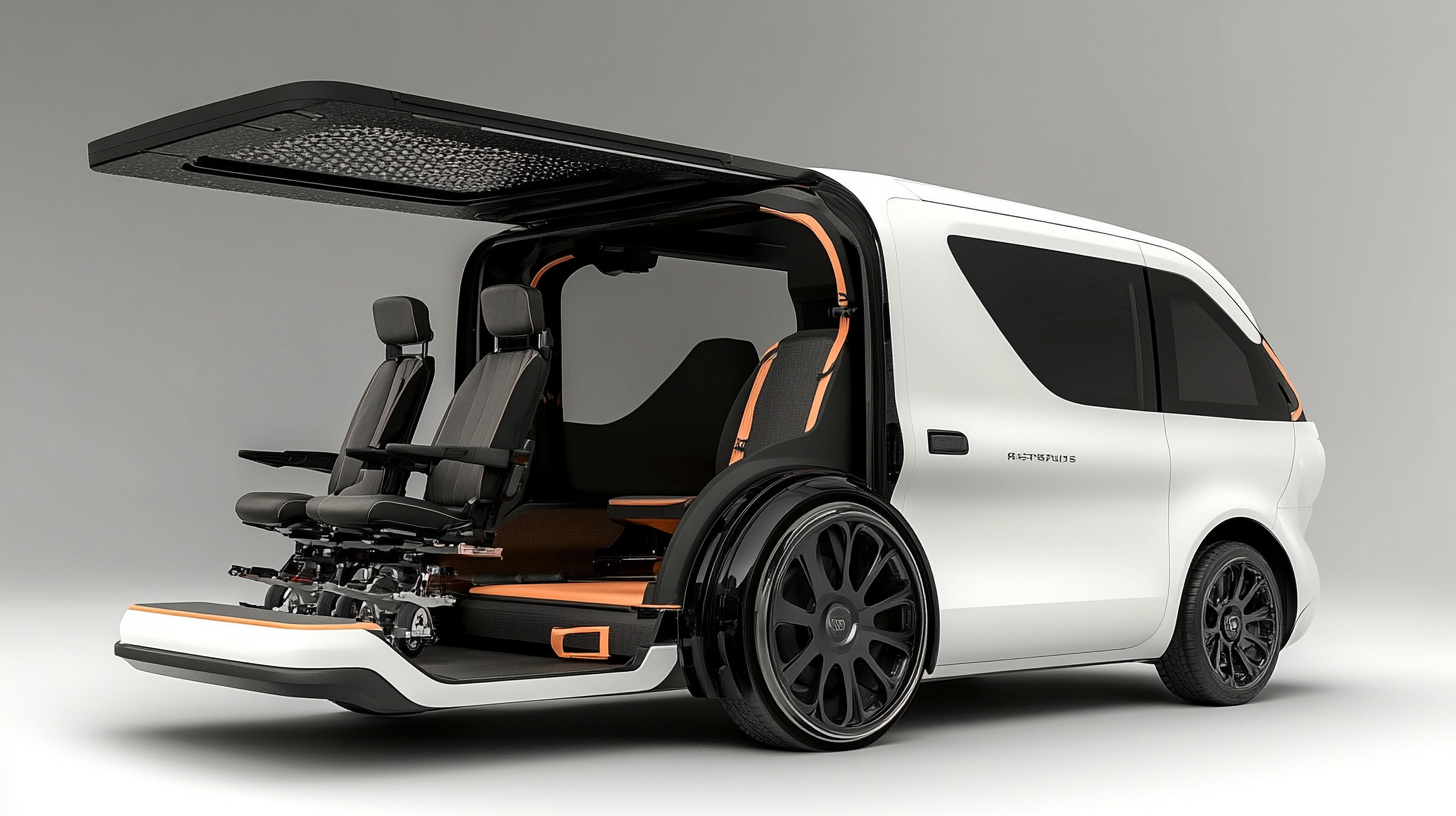2025 Innovations in Wheelchair Accessible Vehicles: A Guide for Global Buyers
You know, over the past few years, there’s been a noticeable boom in the market for wheelchair accessible vehicles, or WAVs. This really comes from a growing recognition of how important accessibility and inclusivity are. A report from the International Rehabilitation Research and Training Center estimates that by 2025, we could see a 25% increase in demand for these vehicles. That’s largely thanks to our aging population and a bigger focus on creating mobility solutions for people with disabilities. This uptick is really part of a larger societal trend where we’re all trying to make sure that transportation is not just available but also fits the diverse needs of everyone.
As we approach 2025, if you’re in the market for a WAV, it’s super important to stay on top of the changes happening in this space. With so many cool innovations popping up in design, tech, and manufacturing, we’re looking at some seriously upgraded comfort and usability. According to recent info from the National Mobility Equipment Dealers Association, about 90% of folks are prioritizing safety and ease of access when they’re choosing a WAV. So, in this blog, we’ll walk you through a handy guide to the latest trends and innovations in the industry. Our goal? To help you make smart choices that fit your unique needs and expectations.

Emerging Technologies Shaping Wheelchair Accessible Vehicles in 2025
Hey, have you heard about the amazing things happening with wheelchair accessible vehicles (WAVs)? By 2025, emerging technologies are really going to shake things up, making these vehicles safer, more efficient, and just plain easier to use for folks with disabilities. At the heart of these changes are some pretty cool innovations, like automation and smart tech. Manufacturers are getting the memo about what users really need, so they're adding in features like automated ramps, voice recognition, and even real-time tracking. That means getting into your vehicle is going to be a whole lot easier than ever before.
And it doesn't stop there—building an accessible infrastructure is super important too! Cities are stepping up their game when it comes to public spaces and transport. This whole thing about WAVs and urban design? Yeah, it's becoming a big deal. We're starting to see smoother pathways and designated parking spots for accessible vehicles pop up. These improvements not only help wheelchair users gain more independence but also push the conversation about why we need inclusive mobility for everyone.
Collaboration is key here. You’ve got automotive companies teaming up with tech developers, which is a game changer. People from different sectors are really pushing for a more inclusive automotive industry and shining a light on how essential welfare vehicles are for fair mobility. So as these innovations roll out, it’s exciting to think about all the new options that will be available, making life a little easier for those living with disabilities. It’s all about blending those needs into everyday life, right?

Key Features to Look for in 2025 Wheelchair Accessible Vehicle Models
As we glance ahead to 2025, it’s clear that the world of wheelchair accessible vehicles (WAVs) is really starting to change, with a big emphasis on innovation and making things more inclusive. You know, with about 15% of people worldwide living with some kind of disability, the call for accessible transportation is definitely on the rise. If you're in the market for a new model, there are some key features to consider like advanced driver-assistance systems, roomy and flexible interiors, and tech that's super user-friendly and really helps with mobility.
Now, let’s chat about the electric vehicle tech making its way into WAVs—this is pretty important as we head into 2025. Manufacturers are getting creative with energy-efficient designs that not only cut down on emissions but also help save some bucks on operational costs. We’ve even seen some cool compact micro EVs that cater to wheelchair users, marking a shift towards more sustainable urban travel options. Many of these new models have removable seats, which means you can mix and match the setup to fit wheelchairs just right.
And let’s not forget—safety should always be at the forefront! There are stats pointing out that accessible vehicles can encounter some unique challenges out there on the road. So, features like enhanced stability and top-notch crash-test ratings are super important. If you’re shopping around, keep an eye out for WAVs that offer smart mobility features like smartphone connectivity and real-time navigation help. This way, you can hit the road feeling confident and easy about your travels. As the market keeps evolving, staying up-to-date with the latest advancements will really help you make the best choices that fit your individual mobility needs.

Comparative Analysis of Global Brands in Wheelchair Accessible Vehicles
You know, the world of wheelchair accessible vehicles (WAVs) is really changing fast! When you take a look at different brands from around the globe, it’s pretty clear that there’s some amazing innovation happening. Recently, we saw some awesome specialized vehicles at showcases, and they really emphasize how important it is to think inclusively in car design. Take Japan, for example—they’re really stepping up their game with vehicles that have thoughtful features aimed at helping the elderly and people with disabilities. It’s awesome to see a culture that prioritizes accessibility in transportation like that.
The new models coming out, especially those shown at the latest welfare expos, are a great example of how designers are focusing on making things user-friendly for everyone. These rides not only come with handy modifications like ramps and roomy interiors, but they’re also packed with cool tech that really boosts the overall driving experience. And with competition getting more intense, manufacturers are feeling the heat to innovate while keeping prices reasonable. So, if you’re in the market, it’s definitely worth checking out the variety of options available all over the world.
What’s also interesting is the rise of brands from emerging markets. It’s showing a big shift in the automotive world, especially with the push for electric and hybrid models. As countries step up to meet the needs of an aging population and focus on greener transportation solutions, I think we’ll see comparative studies on WAVs becoming super important for anyone looking to find the best mobility options out there globally.

Sustainability Trends Influencing Wheelchair Accessible Vehicle Design
As we move towards a more sustainable future, the design and manufacturing of wheelchair accessible vehicles (WAVs) are evolving in significant ways. Sustainability is not just a trend; it is becoming an essential component of vehicle design that appeals to environmentally conscious consumers. Innovations are emerging, integrating eco-friendly materials and energy-efficient technologies into WAVs, ultimately reducing their carbon footprint. Manufacturers are now prioritizing materials that are recyclable and sustainable, ensuring that the production process aligns with global green initiatives.
Another key trend influencing the design of wheelchair accessible vehicles is the integration of electric and hybrid powertrains. By utilizing electric or hybrid technologies, these vehicles are not only more energy-efficient but also contribute to a quieter and less polluted urban environment. This shift toward electric WAVs represents a commitment to advancing accessibility without compromising on sustainability. Furthermore, enhanced battery technologies are making it possible to extend the range of these vehicles, addressing one of the key concerns for users facing mobility challenges.
Moreover, user-centric design practices are at the forefront of innovation in WAVs. Sustainable practices are not just about the materials used; they also encompass how these vehicles adapt to the real-world needs of users. By focusing on inclusive design, manufacturers can offer vehicles that are not only accessible but also functional and comfortable for all passengers. This holistic approach encourages a more inclusive society and highlights the importance of accessibility in the context of sustainability.
User Experience and Accessibility Ratings: What Buyers Should Consider
So, if you're thinking about buying a wheelchair-accessible vehicle (WAV), there are a couple of things you really want to keep in mind. First off, user experience and accessibility ratings are totally key to your decision-making process. The industry is changing all the time, with new options popping up, so it’s super important to look beyond just the specs. You want to see how well these vehicles actually fit into people’s daily lives. Accessibility ratings are crucial because they give you a good sense of how a vehicle accommodates disabled individuals, helping them get around with more freedom and ease.
First things first, take a good look at how easy it is to get in and out of the vehicle. Think about things like the ramp width, how steep it is, and just how sturdy it feels overall. A quality ramp should make it a breeze to hop in and out without needing extra help. Plus, inside the vehicle, there should be plenty of space not just for the wheelchair user but also for anyone traveling with them, like family or caregivers.
But user experience isn’t just about getting in and out; it’s also about how comfy the ride is and the tech that comes with it. Features like advanced driving aids, easy-to-use controls, and adaptive seating can really take your driving experience up a notch. Accessibility ratings often look at these kinds of things too, so you get a well-rounded idea of how a vehicle stacks up against what you need today. By keeping user experience and thorough ratings in mind, you can make decisions that really fit your lifestyle and accessibility needs.